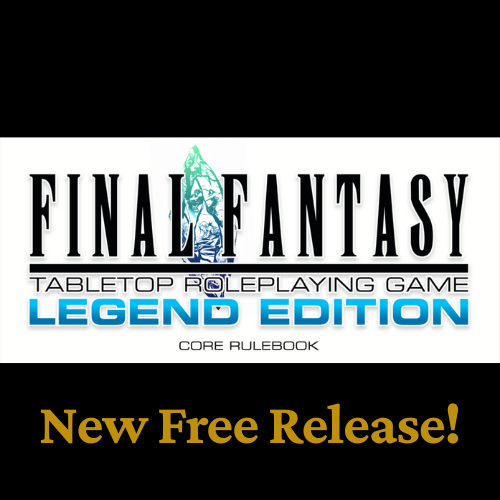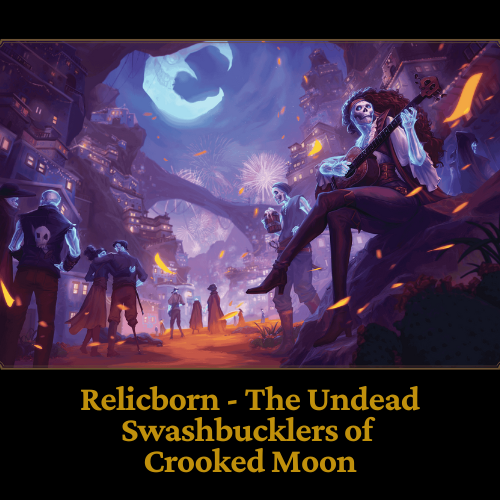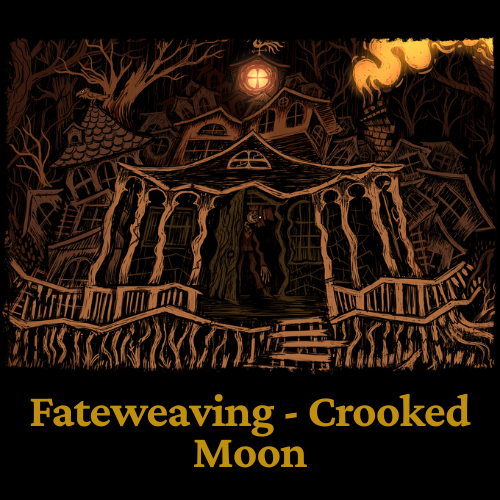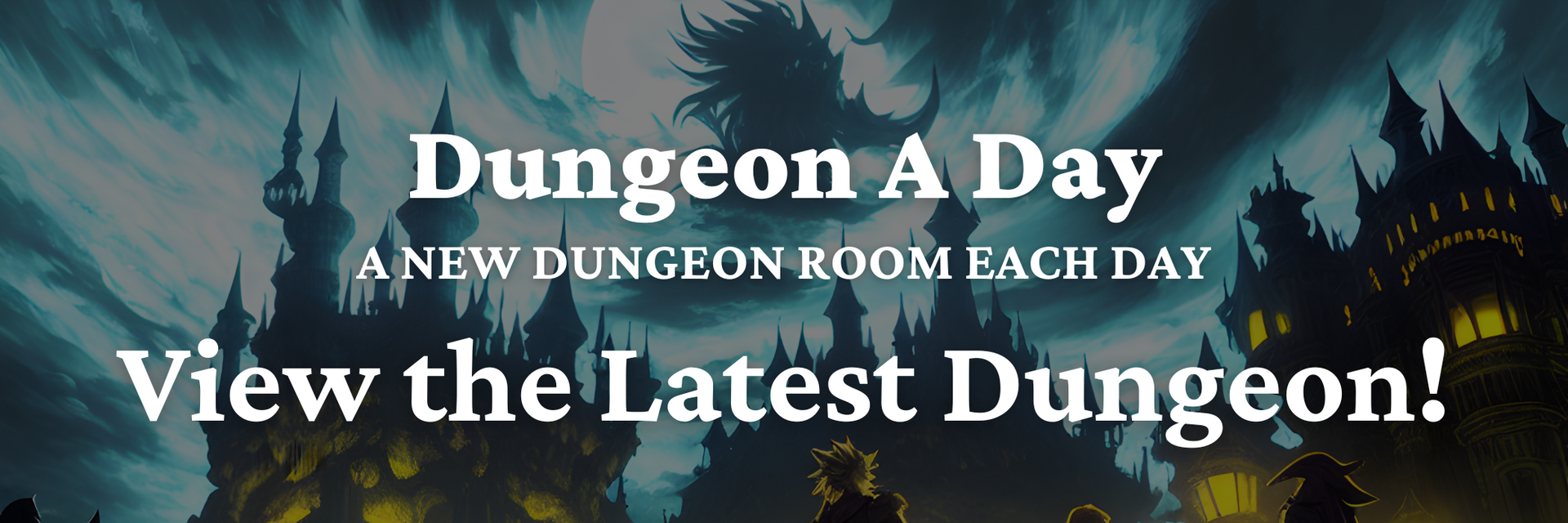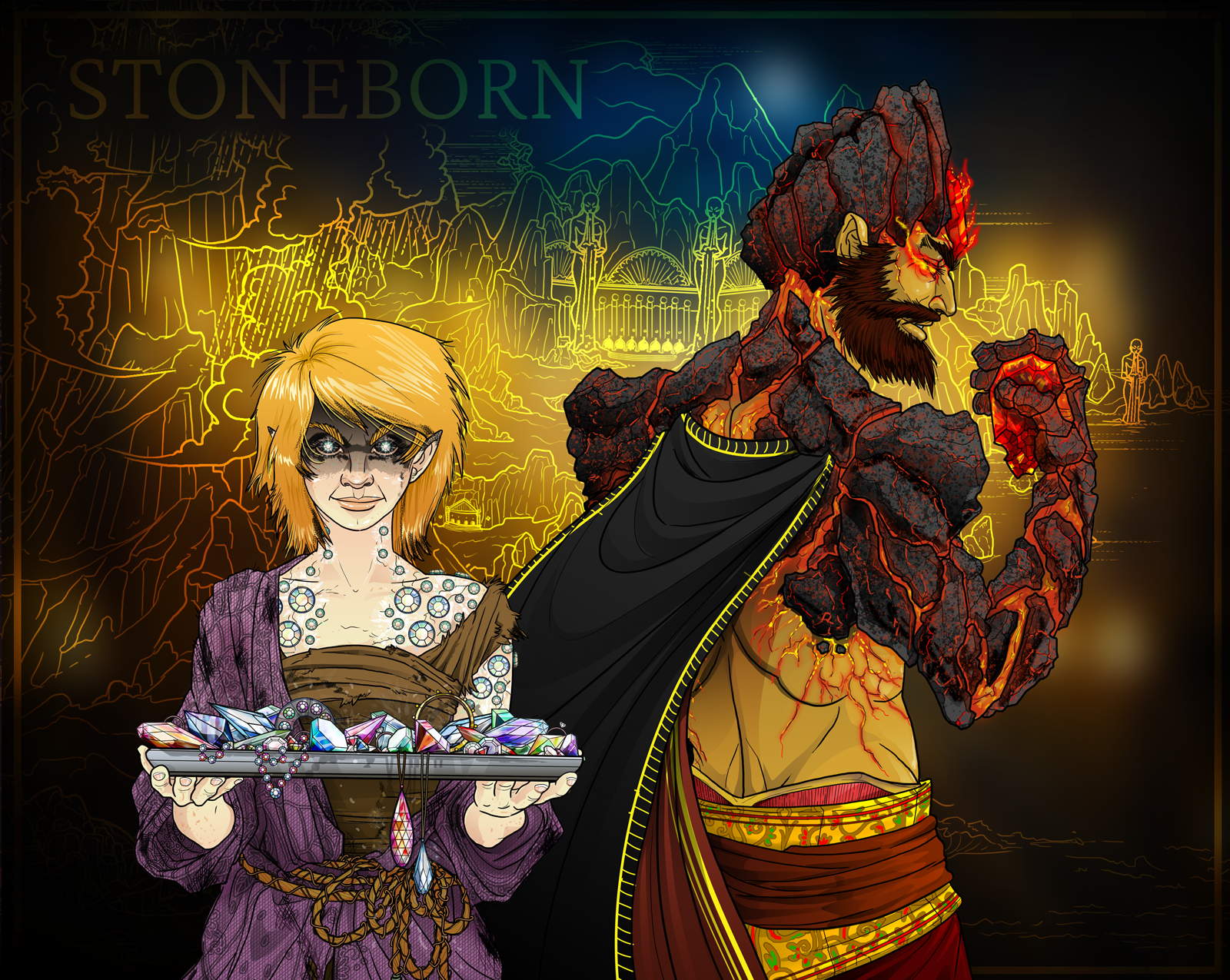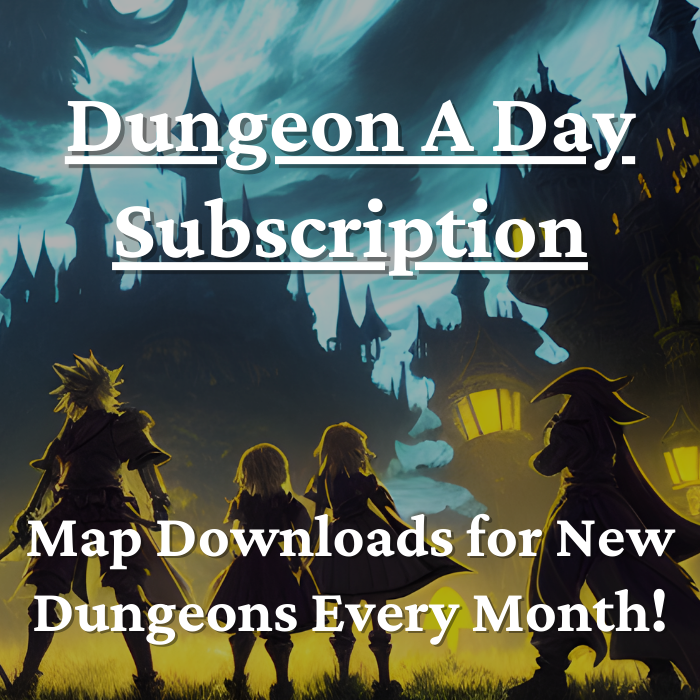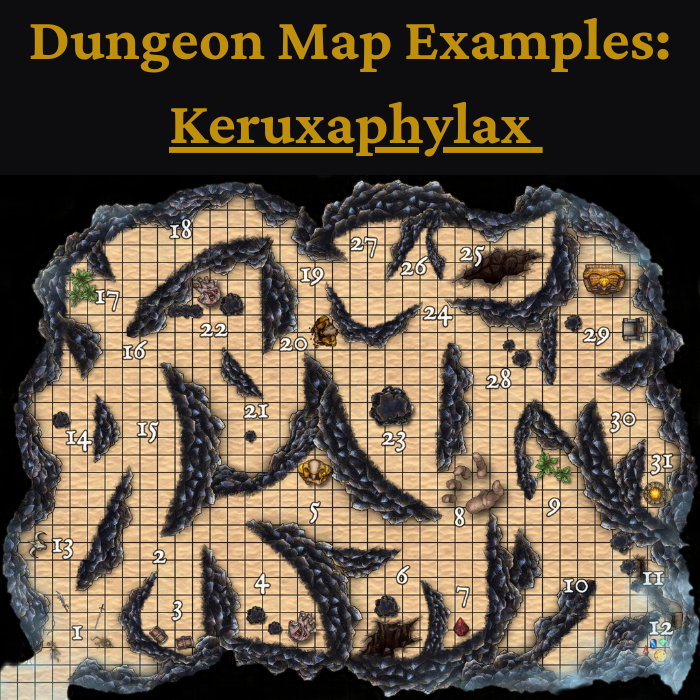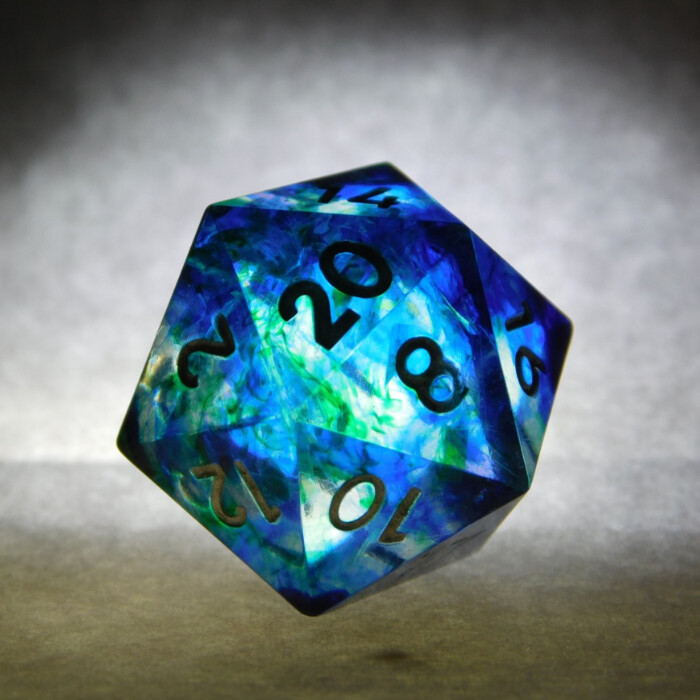Starset RPG Game Review - Score: 85 / 100
This review is part of my new TTRPGs page, where you can find awesome Games Like DnD that you may never have heard of before. If you're interested in finding a new game to play, check out that article!
Josiah Mork is definitely one of the up-and-coming TTRPG designers that you should be watching. Let me first say that Josiah did not pay me to create this review. Through our exchanges, he has become a friend of mine, though that does not affect my review of his game (as you'll see below, I do have some critiques).
We originally connected when I reviewed his first TTRPG: BaG (Basic and Generic) Role-Playing Game, which Kickstarted back in 2021. My take on BaG was that it was a solid game system, but not what I would consider to be amazing.
Now, fast forward a couple years, and Josiah asked me to review Starset: The Great Dimming. And let me tell you, what an improvement. If you’ve seen some of my other TTRPG Reviews, you’ll actually note that my score for Starset: The Great Dimming (at 85/100) makes it into my top-5 list of all time, just behind the Marvel Universe RPG, which I rank at 4th place.
In my opinion, Starset is actually a better overall game than longstanding TTRPG favorites such as Shadowrun, Savage Worlds, Zweihander (another grimdark TTRPG), and more. This may seem like a stretch, but read on to see why I think this top-5 placement for Starset is so well-deserved.
If you want, you can also check out the Starset Kickstarter page to get a feel for the game, while you read this review.
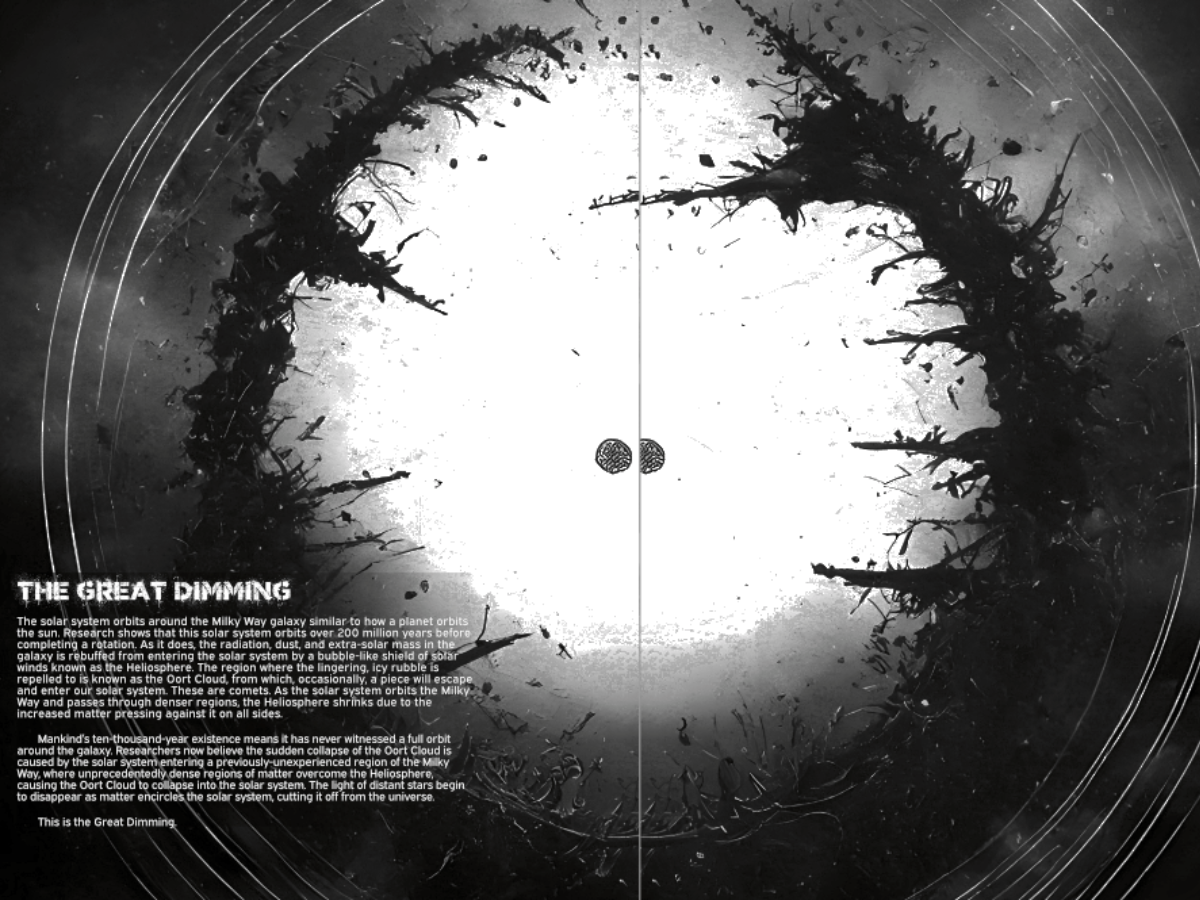
How Unique is Starset RPG: The Great Dimming: (9/10)
Every great modern TTRPG is both firmly rooted in the genre’s core concepts established by D&D, and yet also expands upon key components to improve player/ GM experience.
Starset: The Great Dimming hits these marks as it contains ideas that are somewhat standard to the TTRPG genre, while there are also parts that take common ideas in entirely new directions.
Character Creation
Probably the most brilliant part of Starset is character creation.
There are only 3-core stats (Toughness, Vitality, Movement) to player characters in Starset, and all three are actually originally determined by finding your character’s height and weight. I was honestly surprised by this, but it's also interesting to see an TTRPG tie stats to something like character appearance.
Once core stats are determined, the next major part of character creation are “plot choices.” When creating a character, you're given a series of 4-15 choices you select, from essentially a random list of backstory prompts. Based on the prompt, you make a choice, which then shapes your character’s Skills, maybe your core stats a bit, and your character’s “Keywords.”
Keywords are like “Perks” or even “Feats” in other games, in that they give your character bonuses to skills, etc. or sometimes negative effects.
Taking your character’s “plot choices” and “keywords” into the game lets any player – even and especially those new to the TTRPG genre – start an RPG campaign with a nearly fully-fleshed out backstory that actively affects your character’s stats and skills.
Character Leveling
As if character creation wasn’t enough, I also love the Starset leveling system - at least as far as gaining XP goes (I do have some critiques, later, about the overall progression/ lack of options with leveling up).
Most times that you’re making a skill check (which is all the time), you’ll be rolling more than 3-dice at a time. I mention this because if you happen to roll 3-dice that land on the same number – for any roll – you get +1XP.
I’ve always enjoyed the idea that the more your character “does” something, the better they get at that activity. So, it was really fun for me taking on missions or trying to complete tasks, and naturally "leveling up" while doing so.
Dice Pools
Much like the Cypher System, in Starset, your character has a dice pool that also functions as HP.
Every turn, your character replenishes their dice pool up to their maximum value, and those dice can be “spent” on performing actions to increase your likelihood of success.
If your character takes injuries (or becomes fatigue through additional exertion), the number of dice replenished to your pool decreases each round. If you ever take enough damage that you can’t replenish your dice pool to at least 1, your character dies.
This is obviously a close idea to Monte Cook’s Cypher System rules, but with some unique spin on it. This kind of dice pool/ HP usage is also very rare among TTRPGs, so definitely counts towards being a unique strength of the system.
It also doesn’t hurt that the way Starset uses dice pools is very clear, easy-to-use, and does not obstruct the game’s flow in any way.
How Easy is it to Learn to Play Starset RPG: (10/10)
Compared to Josiah's first game, BaG RPG, which only had a 55-page rulebook, I was at first a little concerned by Starset, which comes in at 271-pages. However, the core rules to play Starset RPG only requires reading about 4-chapters (roughly 53-pages) and a lot of those pages are taken up by charts and artwork.
As you'll see, my impression with Starset RPG is that the game is very easy to learn and teach to new players.
Character Creation
Back to generating characters – I love games where I can create a new character in under 15-minutes.
Do you know how many TTRPGs let you create characters in under 15-minutes? Pretty much none.
In that list, and along with Starset, I’d include BaG, maybe Cypher System if you kind of know what you’re doing, Eternity TTRPG, and that’s pretty much it. I realize that if you've been playing D&D or Pathfinder for your entire life, maybe you too could make a character in 15-minutes. But I'm talking about picking up a game for the first time, and still hitting that 15-minute mark. So no, D&D doesn't make the cut, here.
Additionally, the amount of immersive character-building you actually dive into during your 15-minutes of character creation with Starset RPG is unmatched. It’s easy, fast, and compelling, which is why I give this section a solid 10/10.
Gameplay and Skill Checks
Pretty much all of Starset RPG game is played using skill checks. Whether you’re investigating a break-in, conversing with an NPC, or attacking someone, you’re rolling one of the game’s many Skills to see what happens.
I would say that Skills in Starset RPG take the place of “core stats” in most other games. I think Starset's "Skills" are well-defined and clearly labelled, leading to clear gameplay.
When it comes to Skill Checks, you basically just roll a number of d6 to see if you get enough “checks” to succeed at whatever task your character’s attempting. Nothing really unique here, but it’s easy to understand, and it keeps the game moving at a quick pace.
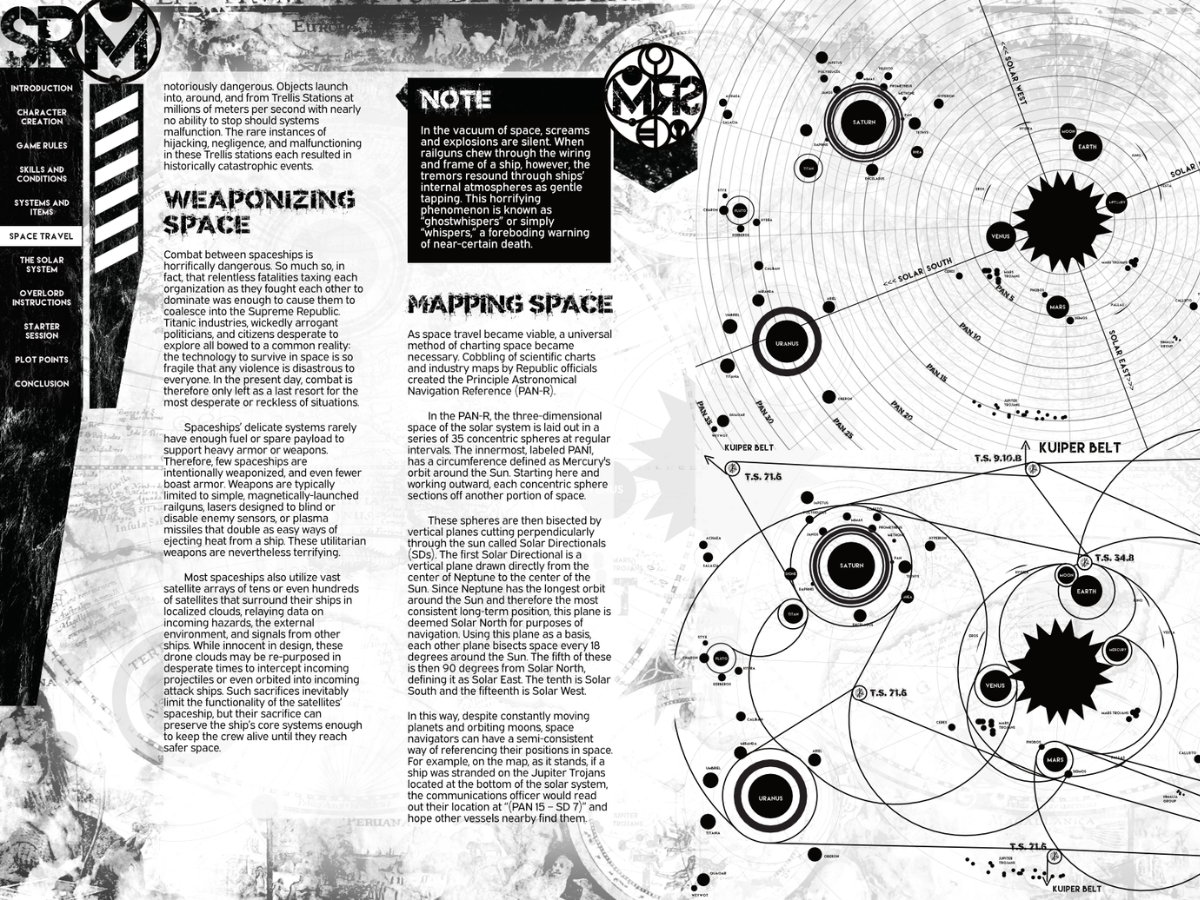
Starset Presentation: (8/10)
I really like Josiah’s graphic design and layout choices for Starset RPG, and I think this game is a bit of an improvement over BaG, which I also like.
The graphics on the front and back cover, as well as the page borders throughout the text work very well. There’s definitely a unique “style” to Starset that makes the book feel both complete, and at home in the Sci-Fi genre.
I have to mention though that there are font choices in the book that are very difficult to read. If you sometimes have trouble reading small or partially-blurred text, you may not love all of the font choices in Starset RPG, to be honest.
As a “grimdark RPG,” I think the somewhat messy font actually makes sense for the game, thematically. However, there are places such as Pg.9 where the bolded text is almost too runny, or Pg.10 (in the bottom left corner) where the white text actually runs into a white background of oblivion (I think this issue was fixed in the PDF).
These issues are relatively small and did not affect my overall love of the game; they were more like small occasional annoyances.
Starset: The Great Dimming Lore: (10/10)
The lore for Starset: The Great Dimming makes me think of Starcraft, but if there were only humans. It’s gritty, dark, futuristic, and provides a deep dive into space exploration, survival on the fringe of civilization, and all kinds of related topics.
I especially enjoyed the various Factions presented in the game’s lore, their leaders, and basically everything provided in the chapter on “The Solar System,” which thoroughly details organizations, faction motivation, rumors around the universe, and so much more.
As the game master (known as the “Overlord” in Starset), I felt that there was more than enough material provided to create epic game sessions without needing to spend too much time in the game's preparation.
The core rulebook's lore is well laid-out and explained, and genuinely interesting.
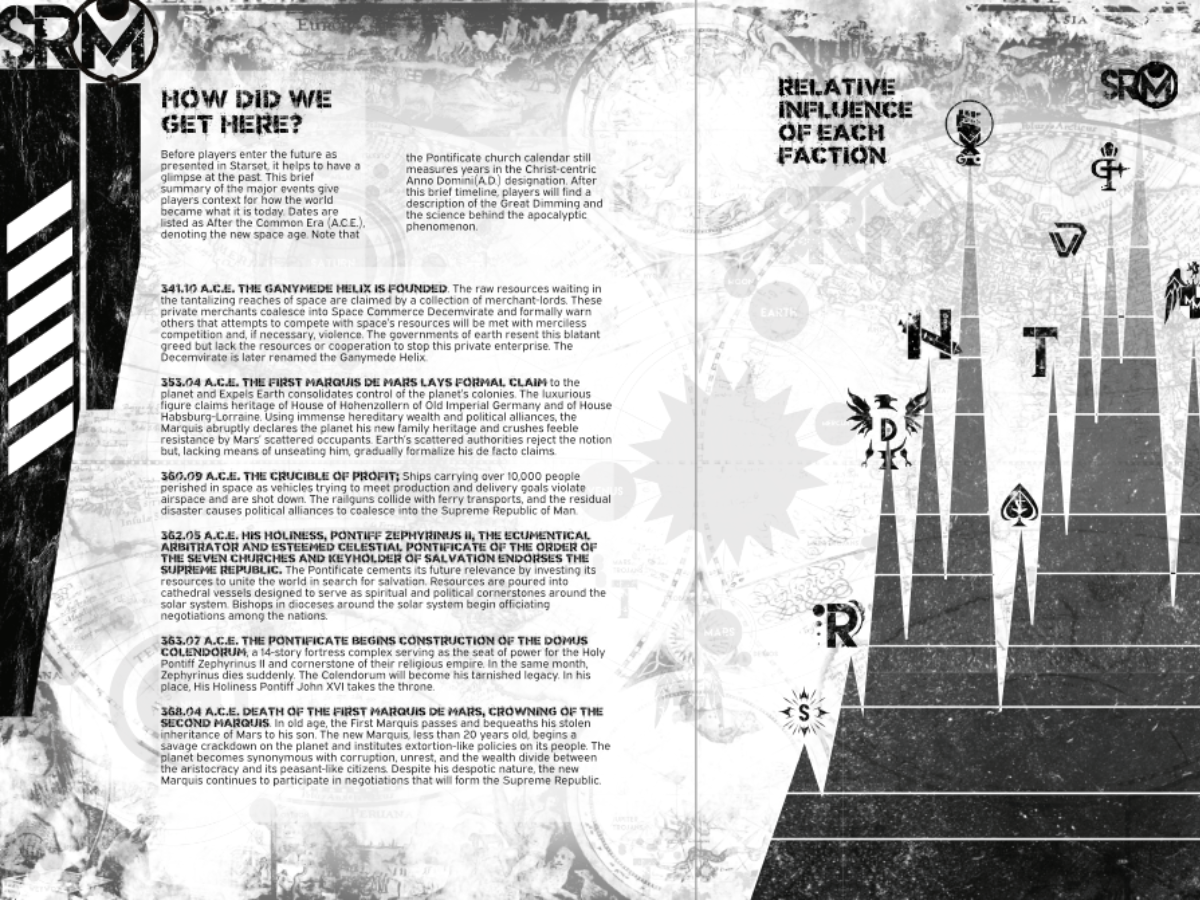
Combat in Starset RPG: (6/10)
As with BaG, I think that Starset isn’t really created for the power gamer (like me) who loves combat. Or rather, combat isn’t emphasized in incredibly unique or exciting ways.
Really, this is only the major criticism I have about Starset. So, if you don’t care a whole lot about having a fully developed combat system in your game, then ignore this section.
However, if like me, you really enjoy nuance and strategy in combat, then you may feel the need to supplement your Starset experience in some way, such as with homebrew rules. Personally, I'm just hoping for some supplemental material to Starset RPG in the future that specifically expands combat.
How Combat Works
As mentioned earlier in this review, every action in Starset RPG comes down to a Skill Check resolution, which includes combat.
If my character attacks with a rifle, I’d make a “Weapon (Ranged)” Skill Check, adding in any bonus dice I’d like from my character’s dice pool (up to a total of 5). I'd then add in modifiers to the attack from my weapon, which say adds another +4.
If my total “checks” from my dice rolls equal or exceed my target value, then I hit. That action then becomes a “Floating Action,” which actually resolves at the end of the target character’s upcoming turn.
Then, the defending character has the option to use their turn to try and “Dodge” the attack, or something similar that would otherwise reduce its damage. Basically, same process, and the degree to which they succeed reduces my degrees of success, and damage dealt.
Combat Skill Outcomes
So, that’s pretty much it. In my group’s experience, the Starset combat system ended up mostly being one character attacking, and then the attacked character spending their turn defending themselves.
Afterwards, the same character would attack again, and the same defending character would spend their turn trying not to die... again. Or, if they had a large enough dice pool, they’d also make a counterattack of their own, using the same simple attack/ defend process.
My Wishlist
I love that combat in Starset is very streamlined and fast paced. In addition to those great traits, however, my wishlist for a future version of Starset RPG includes:
- An expansion of weapons with unique traits.
- Some kind of unique powers or combat maneuvers that provide additional layers of strategy, but still keep combat simple.
- “Keywords” from your character’s backstory that provide or enhance your character’s unique power or combat maneuvers.
Combat is the one big piece of Starset RPG: The Great Dimming keeping it from being even higher up on the list of best TTRPGs of all time.
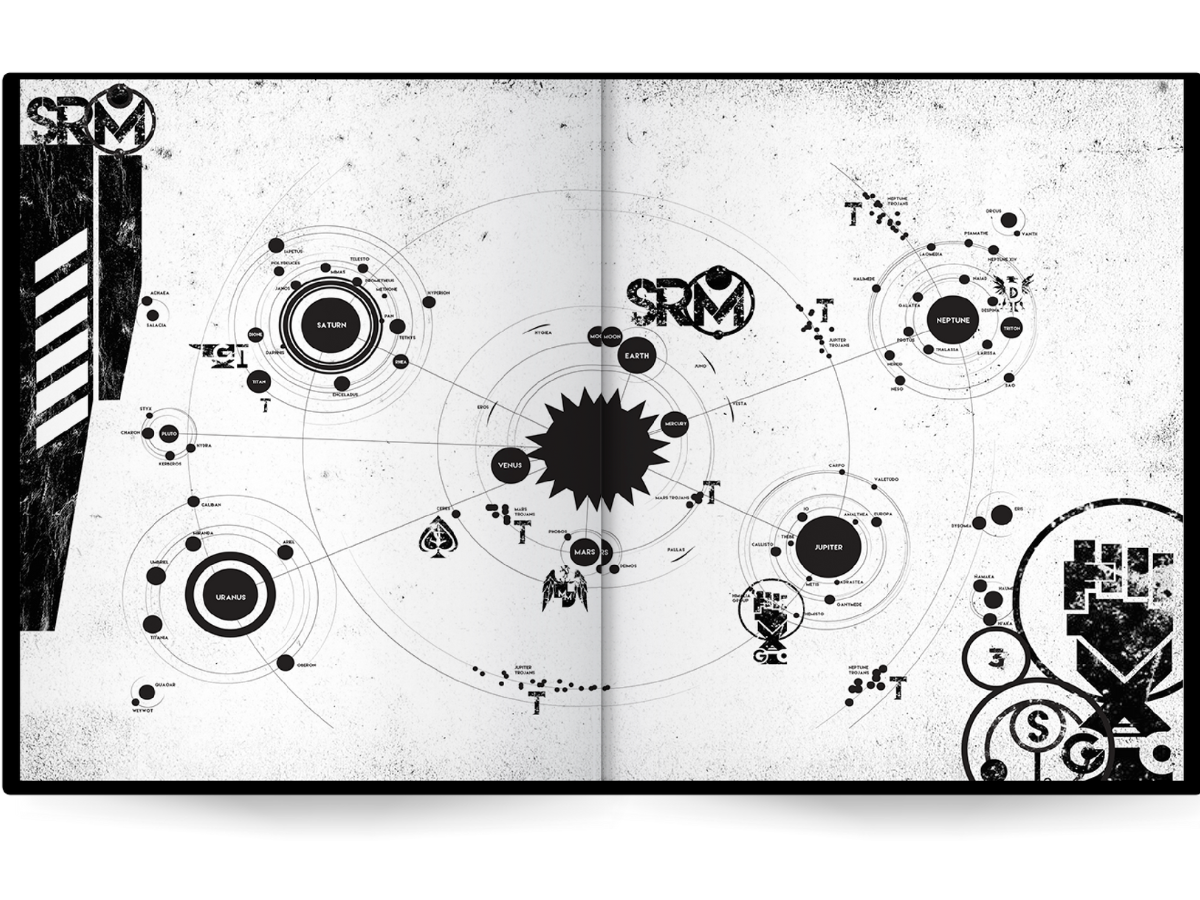
Starset RPG Game “Flow”: (9/10)
Starset RPG “flows” smoothly, from character creation through actual play during the game’s session. Overall, Starset is a “rules-light,” classless RPG system, that provides a framework for campaign setting, character backstories, and skill/ knowledge/ combat resolution.
I tend to favor game systems that are light on rules. Many TTRPGs come with dense game manuals that require players to double-check rules quite frequently during the game - which, in my opinion, is why many TTRPG players come up with their own in-house rules meant to simplify the games they play.
In any case, I do think that Starset RPG: The Great Dimming is probably a little bit too light on rules/ game systems – even for my tastes.
What’s Missing
Take this section with a grain of salt, as I am giving Starset RPG: The Great Dimming a 9/10 when it comes to overall game “flow.”
However, if you recall what I mentioned before, Starset RPG doesn’t offer much meat and potatoes when it comes to combat. When it comes to overall game sessions and character progression, I actually feel basically the same...
There isn’t anything “wrong” with Starset RPG. There just isn’t anything inherently engaging about the game once you get past character creation, lore, and the cool way that skill checks resolve.
What I mean is that most TTRPGs have a progression system that naturally leads campaigns to build in intensity over time:
- In D&D, players gain levels, which provide unique and powerful abilities/ spells based on the character’s class.
- In Cypher System, you increase your character’s stats and gain unique “Cyphers” that provide you with interesting game options and powers.
- In Star Wars, you gain Force Powers, etc.
I would love to see Starset adds in more level-up options/ ways to use XP in the future, such as:
- The ability to create/ improve NPC importance (and have NPC importance do more than just be a reminder for GMs to use those NPCs in game sessions).
- The ability to add desired keywords (and have more keywords in the game – especially those that count as unique “powers” of some kind, for both in and out of combat).
- The ability to increase (or even decrease) your reputation with desired factions, without needing to resort to keywords (and to have that reputation have more "in-game" meaning or value).
- The ability to add more than 5-dice to a skill check, to make your character truly god-like at certain skills, etc.
- The ability to increase your character's Toughness, Vitality, and Movement (your character's core stats).
What it boils down to is that I want something within Starset RPG's rules that I feel like I’m “endeavoring towards,” aside from just the campaign story that the GM is creating. I get that Starset is a grimdark RPG, and so it is weighted more towards realism and somewhat frail characters.
But even so, I want to have my character be able to "do" more in the game, both as a matter of abilities/ powers, and their capacity to affect the game's world.
Artwork: (5/10)
I don’t mean this in a negative way, but Starset RPG: The Great Dimming clearly makes use of AI artwork. I know this is a hotly-debated topic right now, and I won't weight in too much about AI art overall. I'm just pointing out that Starset makes use of quite a bit of AI art.
Some pieces look kind of odd, as AI art (as of the date of this article) still struggle with making human-looking art. With most of Starset’s art though, I think it is kind of nice to have as it breaks up the text, and makes the book look quite presentable.
With up-and-coming TTRPGs, I also never expect too much in the way of artwork. New TTRPGs often can’t afford a professional artist who can create multiple high-quality pieces, after all.
Starset has done really quite well as a Kickstarter game, but never aimed for high-quality artwork, anyways. I can appreciate that, and the game’s overall experience is certainly good despite the lack of full-color, human-made artwork.
Ease of Purchase: (10/10)
Starset is extremely easy to purchase. You can find it on the Hoodwink games website, and find information on it at the and Kickstarter page.
Price & How Many Books Do You Need to Play: (10/10)
Starset: The Great Diming has a player manual PDF price of $15, or complete core print for $40. For a core rulebook that’s over 200-pages, those are great prices to have.
I also enjoy that to play Starset, you only need the one core rulebook. Everything from player information to GM (Overlord) information is contained within.
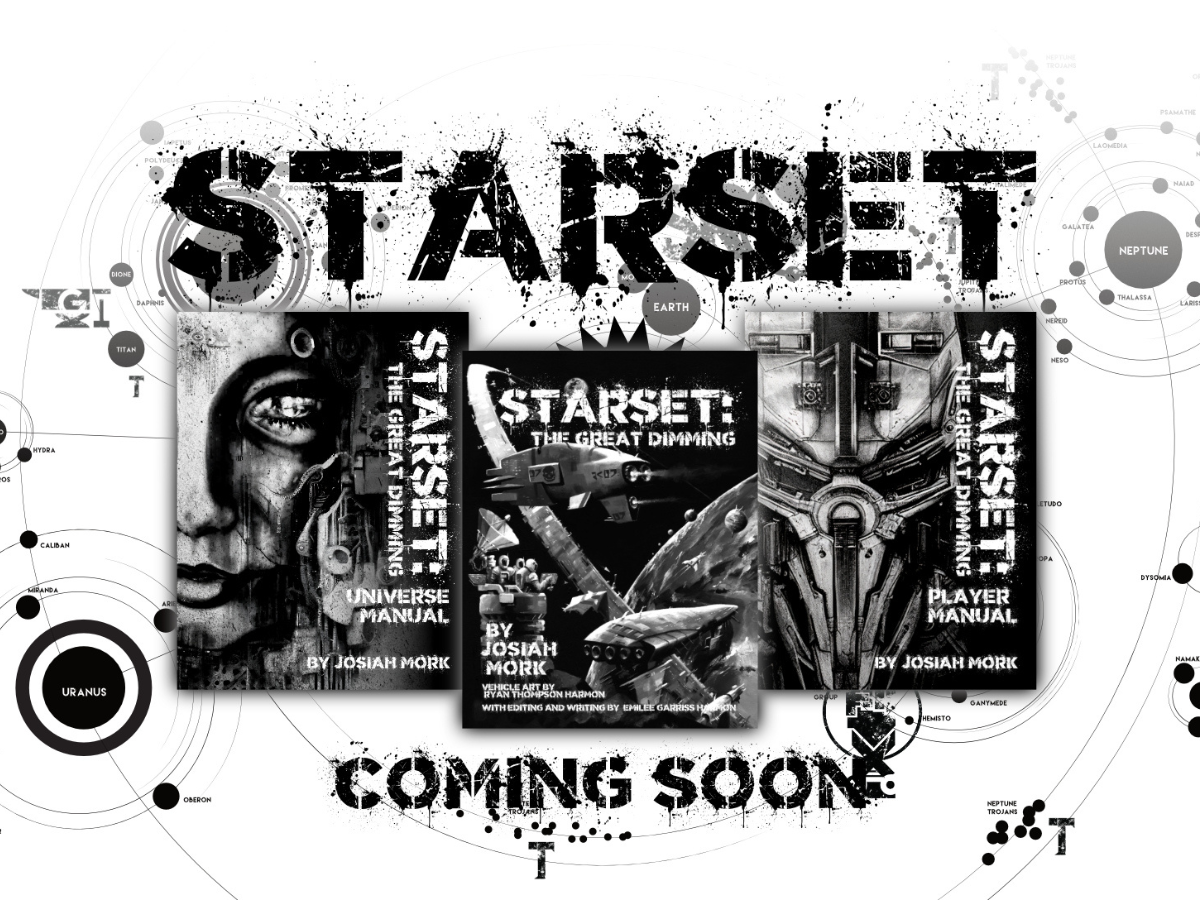
Ease of Starting a Group & Availability of Supplemental Material: (8/10)
At this time – to the best of my knowledge – there are not any supplemental materials for Starset RPG. Hoodwink Games does offer a “Player’s Manual” and “Universe Manual” that are separate from the core rulebook, but those are actually pieces of the core rulebook split out into separate guides, and not their own unique books.
If you’re thinking of trying out Starset: The Great Dimming, I can confidently say that you can bring this game to any group of people – even those new to TTRPGs – and have a great time. The game’s easy to pick up, fast-paced, and provides tons of interesting setting material.
I’m personally hoping for more supplemental material from the game in the future (particularly for combat and level-up progressions).
Starset RPG: The Great Dimming is Produced By:
Josiah Mork – Hoodwink Games
Dice, Dungeons, Games & More - Eternity TTRPG
Share This Article

Author - Jacob Tegtman
Dear reader, I hope you enjoyed this article. Tabletop gaming has been a passion of mine since I was 6 years old. I've played just about every game from Dungeons and Dragons to video games like Final Fantasy. These games have inspired me, made me laugh, made me cry, and brought me endless hours of enjoyment.
I started Eternity TTRPG - and the indie tabletop game that goes along with it (Eternity Shop) - to share my love of gaming with others. I believe that in our technology-driven age, tabletop games help bring a sense of magic and community back into our world.
If you love the site, please share it with others! I have lots of gaming-related material for you to peruse and use in your own gaming sessions. If you have any questions about the site or want to contribute, just send me a message using the "Contact" page, which you can find in the site's footer.
